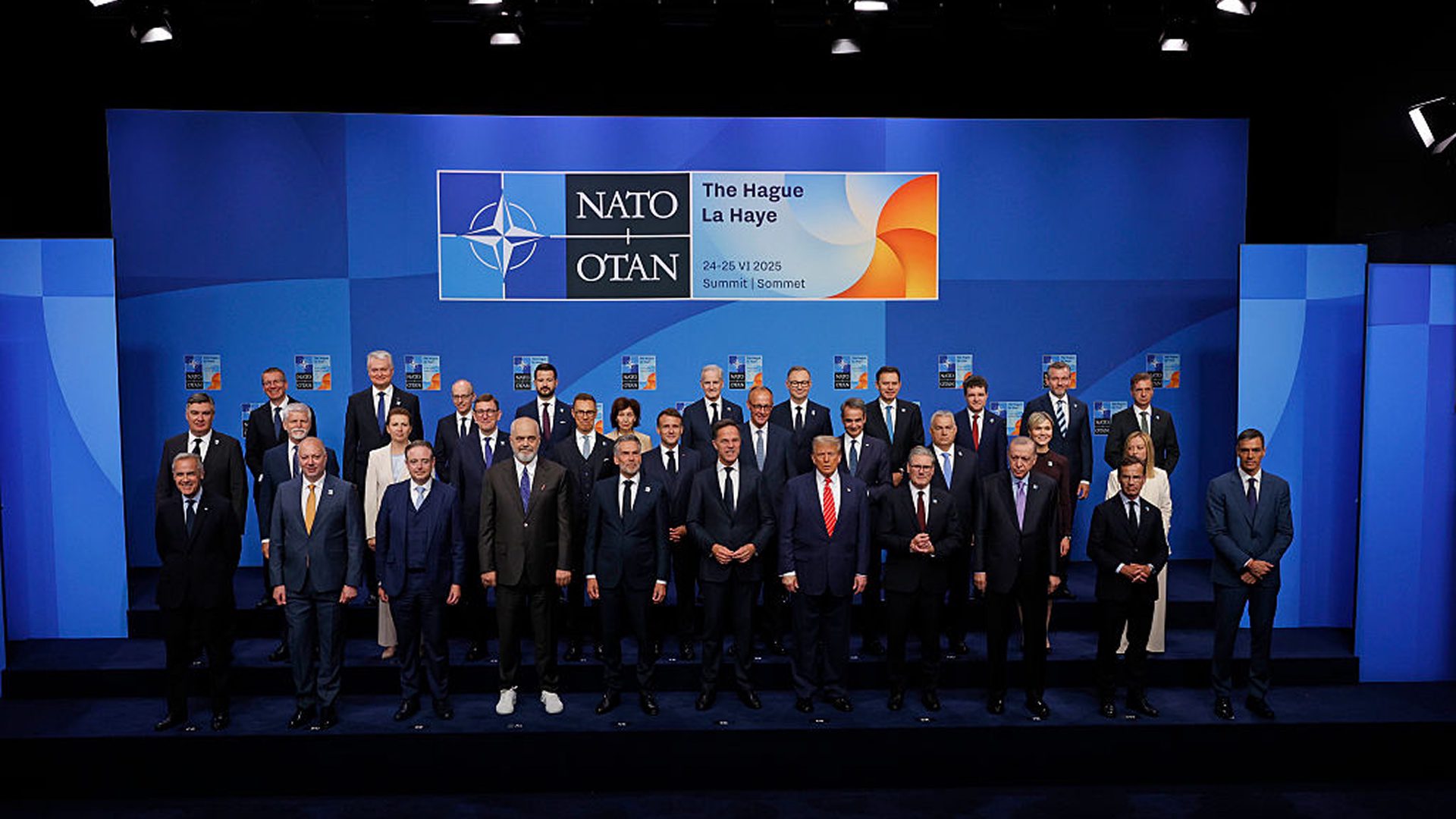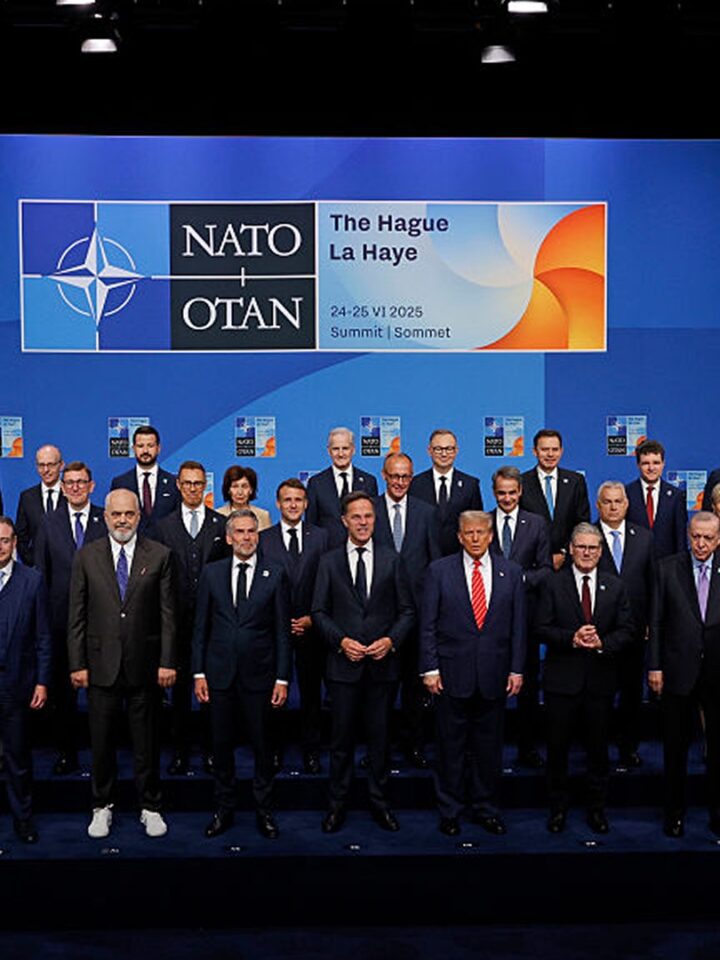The NATO summit held in The Hague in June 2025 marked a significant milestone in the evolution of the alliance’s strategy. The key outcome was an agreement among all member states to raise defence and security-related spending to five per cent of GDP by 2035. This decision provoked a sharp reaction from Moscow, reflecting not only political concerns but also a strategic awareness of the long-term implications of this shift.
Russia’s perception of the results of the NATO summit
Russian assessments of the prospects for the summit were ambivalent from the outset. On the one hand, there were expectations that US President Donald Trump might voice dissatisfaction with its outcome and resume talk of withdrawing from NATO. Moscow hoped that divisions within the alliance – for example, opposition from Spain, Belgium, or Italy to higher defence spending – would create ‘a window of opportunity’ to expand contacts with sceptical members and promote alternative alliances as a counterbalance to Western dominance. On the other hand, there were predictions that NATO member states would sharpen their focus on Ukraine and institutionalise the categorisation of Russia as the sole long-term threat to their security.
The actual outcomes of the NATO summit, where participants went to great lengths to avoid clashing with Trump, turned out to be modest, with no far-reaching decisions beyond a commitment to increased defence spending. The ‘five per cent formula’, whereby 3.5 per cent is allocated directly to defence and 1.5 per cent to infrastructure, along with an extended implementation timeline, will soften the potential impact on national budgets. Still, the Russian leadership interpreted these moves as strategically significant, as evidenced by the ensuing information campaign in state media and the reaction of Russian public figures. The results of the summit were portrayed as ‘measures against Russia’, and as a deliberate ‘emphasis on the “Russian threat”’ intended to ‘force Europeans to shoulder responsibility for their own security’ and to ‘squeeze more money out of people’.
The reaction of the political and business establishment, and common people in Russia, was a kind of disappointment. They were expecting that Donald Trump would be a troublemaker – for the United States, for its allies, for NATO. But they realised that America is not going to withdraw from NATO, that it stays committed to its alliance obligations – as we saw in the Israeli-Iran war. The current US administration just wants to share the burden of defence spending. It likes contributors and hates free riders.
Pavel Luzin
Senior Fellow at the Centre for European Policy Analysis
This interpretation by Russian officials reflects a broader trend in public opinion. Russians’ perception of NATO as a threat has been rising steadily. In 2011, only 34 per cent of Russians considered NATO a threat; after Crimea’s annexation, 54 per cent believed there was a real risk of large-scale war between Russia and NATO. In the latest survey on this issue in November 2024, 56 per cent said the situation in Ukraine could escalate into armed conflict with NATO. This growth correlates with heightened militaristic rhetoric and the escalation policies pursued by Russian leadership around the Ukraine conflict – any NATO actions are now portrayed as hostile or threatening.
Continuing the arms race
The Kremlin’s sharp response to the summit, particularly Putin’s remark that Russia spends ‘trillions … on ourselves, on our loved ones’, was aimed less at the West than at a domestic audience and wavering elites in EU countries. By announcing ‘planned cuts in Russian defence spending’, the Kremlin sought to present Moscow as a rational actor amid Western ‘escalatory pressure’. This narrative has been actively propagated through state media, in particular by highlighting the high cost of militarisation for European taxpayers and the risk of undermining domestic spending commitments in NATO member states.
Putin’s claim that Russia will cut defence spending is a complete lie. Official plans project military expenditures at 13.5 trillion roubles [$170 billion] this year and around 13 trillion [$164 billion] in 2026 and 2027 – but based on past trends, the actual spending will likely exceed those figures, just as it did from 2022 to 2024.
Pavel Luzin
Senior Fellow at the Centre for European Policy Analysis
What worries the Kremlin is that the summit decisions chart a course to transform the existing economic gap between Russia and NATO countries into a gap in military capabilities – even excluding the US. SIPRI estimates that Russia’s military spending in 2024 stood at $149 billion at current exchange rates or, according to the IISS, $462 billion in terms of purchasing power parity, roughly comparable to the European NATO members’ combined expenditures (excluding the US). But reaching the five per cent GDP target would double Europe’s collective spending to over $950 billion in 2024 dollars. To match these numbers, Russia would require defence allocations of 9–11 per cent of GDP – level that сould undermine socio-economic stability.
Russia’s financial constraints are compounded by institutional problems, including insufficient production capacity for advanced weapons, shortages of skilled personnel, and limited scalability in the defence-industrial complex. Even in priority areas like drone production, technological dependence on allies such as Iran persists, and the short life cycle of these systems reduces their strategic value in the long term.
Against this backdrop, the NATO summit’s decisions underscore a deepening military-economic imbalance, casting doubt on Russia’s ability to sustain prolonged deterrence and confrontation.
In these circumstances, the Kremlin’s main goal is not to offer a symmetrical response but to erode NATO’s political unity by exploiting potential disagreements over defence spending, its effectiveness, and how to pay for it. The intensified rhetoric about ‘Russia’s restraint’ and a ‘militarising West’ should be seen as part of this strategy.


